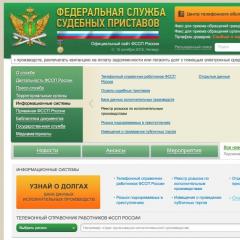How to flash documents - step-by-step guide
In the office work, the rule that all documents that consist more than one sheet are subject to stitching and assurance.
Despite the lack of an approved single order of this process, often in enterprises, as well as government agencies, it is required to sew all formed documents for archives, submission for consideration to any instances (for example, when registering Jurlitz, IP, to participate in tenders), etc. .
Therefore, any clerk and person who collides in its activities with a large number of documentation is important to know how to flash documents correctly. After all, this occupation is quite painstaking and requires care and accuracy.
Dear readers! Our articles tell about typical ways to solve legal issues, but each case is unique.
If you want to know how to solve exactly your problem - contact the online consultant's form on the right. It's fast and free!
To flash documents, a specialist who will do this will need the following items:
- needle (awl, hole punch, drill) - depending on how the volume of papers need to be sewn;
- threads LSH-21 (or banking twine);
- cover case 229 × 324 mm (if you need to form and flash archive business);
- paper sticker 4x8 cm - vested sheet;
- scissors;
- stationery glue.
Preparatory work
 In all institutions, the firmware of documents is engaged in a specialist who has been submitted on the basis of internal departmental acts regulating the rules for handling documents (order of the head, service instruction).
In all institutions, the firmware of documents is engaged in a specialist who has been submitted on the basis of internal departmental acts regulating the rules for handling documents (order of the head, service instruction).
Such an employee of the organization is referred to as a clerk.
As a rule, if he received a special education, he should know exactly how to flash certain documents.
However, often a person who does not fully own accurate knowledge can be sitting in this position.
In this case, he should know that the following must be needed before crossing documents:
- Prepare all tools in advance that will be useful during papers.
- Fold all documents in accordance with their dates and numbers, the right side and in the right order.
- Before crossing, you should make sure that there are no clips and brackets on sheets, and if any somewhere attached, then you need to remove them. Such extraneous stationery will be interfered in the crosslinking process, and with the subsequent storage of documents they are superfluous.
- Then the stitching pack must be folded even so that each sheet lay the same with all the others. If you do not follow this, then as a result of bonding, the pack will look neakkurat, and the edges of the crowded sheets will be removed. With too much volume of crosslinkable sheets for alignment, a special tool is applied.
- Prepare a thread at least 70 cm long.
Step-by-step firmware guide
- Once again, check the numbering and correctness of the documents folded into a single pack.
- Next, armed with a needle, a special selection or another tool for doing holes in paper (depending on the thickness of the pack), it is necessary to make three through vertical holes. The distance between them should not be less than 3 cm. In relation to the center of the sheet.
- Take a pre-prepared thread, put it in a needle to stitch the documents.
- For convenience, there should be holes on the document from top to bottom as: №1, №2 and №3. The specialist should start flashing from the needle to the hole number 2, while the end of the thread must be left from the back of the pack of packets. During the entire firmware process, you need to ensure that this part of the thread remains there.
- Then on the front side you need to skip the needle through a hole number 1 and get it from behind.
- From the back side to turn the needle again into the hole number 2. Now the needle again turns out to be with the outside of the sheet.
- Next, you should turn the needle from the outer side of the paper into the opening number 3 and get it from the back.
- Taking that end of the thread, which remained initially from the back side and the one that appeared from the opening No. 3, they need to be compared, and cut off the excess length with scissors.
- The ends of the two threads are tied to the knot 2 times, as close as possible to the back of the document. The stronger the document is connected, the more convenient to flip it. In addition, it will not crumble on separate sheets and will be stored for a long time.
- The final stage of flashing is sticking a small sheet of paper with accompanying inscriptions. To do this, take glue, paper sheet 2 * 5 cm., Stick it to the very place where stitching was completed. The sheet must completely close the node and partially the ends of the thread. And the remaining 1-2 cm. Threads must be out of stickers.
- A register of the organization is put on the sheet with the accompanying inscription, the prints of which should capture it and part of the back side of the document that was bonded by the sticker. This will avoid the possibility of opening the stitched documents and substitutions of sheets.

How to flash documents to threads - Photo
If the package of documents is not too thick (up to 5 sheets), then the holes in the sheets can be neatly done and the needle itself for flashing. It is important to keep the document in good condition, without reference.
Accompanying inscriptions
This is a text that is written on a sheet of paper that fastens a document from the back.
 As a rule, it contains:
As a rule, it contains:
- the inscription "stitched, numbered";
- the number of numbered sheets, numbers and in words;
- position and FI. responsible person;
- place for signature and its decryption.
You can either print the decoding on the computer in advance, form the finished stickers and multiply them, or write the entire text of the accompanying hand lettering. None either will be an error and the document will not lose their reality.
Sample
The most common on the practice of paper, requiring stitching - these are documents that are preparing for submission to the tax for registration of Jurlitz, IP, or changes to the register or EGRIP. In order for them to be taken and there was no reference to the registration described above, the following paper must be assured.
- Charter (for organizations).
- The official form of the application.
- Protocols of the General Assembly.
- Other documents.
Some documents stitches and assures notary.

Stamped magazine
For example, applications for tax inspectorate. In this case, there is no need to independently sew paper, because a specialist notary office will be engaged in the entire process of flashing and reinforcing documents.
When registering a new legal entity, the firmware of the charter and other documents is made without printing an organization, as it simply is not yet.
As for the internal archives of organizations, they are subject to stitching in their composition:
- accounting registers;
- human Resources;
- executed contracts with counterparties;
- other documents that ensure the current work of the enterprise.
Correctly stitched documents will avoid organizing many problems and ensure a normal level of office work. If the paper is stitched in accordance with the established rules, no important document is lost, and will not have an indecent appearance.


